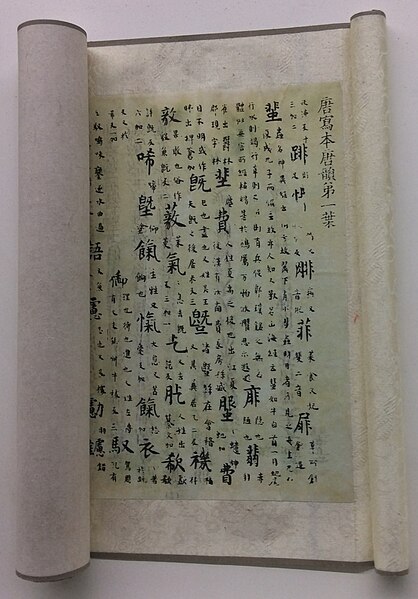Cantonese is a language within the Chinese (Sinitic) branch of the Sino-Tibetan languages originating from the city of Guangzhou and its surrounding Pearl River Delta. It is the traditional prestige variety of the Yue Chinese group, which has over 82.4 million native speakers. While the term Cantonese specifically refers to the prestige variety, it is often used to refer to the entire Yue subgroup of Chinese, including related but partially mutually intelligible varieties like Taishanese.
Chinese dictionary from the Tang dynasty. Modern Cantonese pronunciation preserves almost all terminal consonants (-m, -n, -ng, -p, -t, -k) from Middle Chinese.
Street in Chinatown, San Francisco. Cantonese has traditionally been the dominant Chinese variant among Chinese populations in the Western world.
There are hundreds of local Chinese language varieties forming a branch of the Sino-Tibetan language family, many of which are not mutually intelligible. Variation is particularly strong in the more mountainous southeast part of mainland China. The varieties are typically classified into several groups: Mandarin, Wu, Min, Xiang, Gan, Jin, Hakka and Yue, though some varieties remain unclassified. These groups are neither clades nor individual languages defined by mutual intelligibility, but reflect common phonological developments from Middle Chinese.
A school in Guangdong with writing "Please speak Standard Chinese. Please write standard characters" on the wall.



